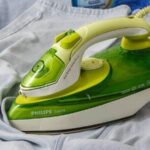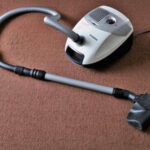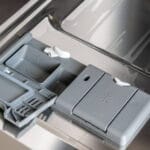There are all kinds of pillows including some that you can’t wash in the washing machine or by hand.. These might be your decorative throw pillows or favorite bed pillows.
In most cases, you find that non-washable pillows have decorative features such as beads and pleats that make them difficult to wash. Others are made of delicate fabrics or fillings that damage quickly after coming into contact with water.
Ending up with one or more such pillows should not be a source of discouragement. It is just like having another item in the house that you cannot wash. A good example is some types of lampshades. Although you cannot wash them, you have to come up with creative ways to disinfect, clean and care for them.
Caring for Non-washable Pillows

Unlike washable pillows, you have to bear in mind that once dirty, it might be impossible to never get non-washable pillows back to their original condition. As such, most of your effort should go to keeping dirt away from them.
Some non-washable pillows come with washable covers. This is a step towards the direction of maintaining them. A washable cover features a zipper on one side or buttons. You only need to unzip or unbutton it, remove the cover, wash it and put it back.
You can acquire tailor made covers to interchange with original ones. This helps you to ensure that the pillow is always covered. As a result, you minimize its chances of coming into contact with dirt.
There non-washable pillows that come without removable covers. You can keep them clean by getting new removable covers. Alternatively, you have to keep them in places that rarely get dusty and away from children and pets.
Avoid keeping your pillows in areas with high humidity. A lot of moisture can expose them to mold. Mold is toxic for your health and also very difficult to remove.
Lastly, use pillow cases and pillow protectors for bed pillows. Good pillow cases should be made of hypoallergenic material to help keep dust mites from your pillows. Pillow protectors should keep dust and all kind of dirt from your pillows.
How to Clean and Refresh a Non-Washable Pillow
Clean a non-washable pillow by vacuuming it regularly. Use a vacuum with an upholstery brush and suck as much dirt and dust as you can. Note that pillows harbor dust that you can see. This might also include dust mites, whose waste matter is a source of allergic reactions for some people.
Use tape or lint roller to capture lint balls. You can as well use a wide tape to capture dust if you do not have a vacuum cleaner.
Freshen your pillows by fluffing them regularly and airing them in the sun at least once every week. You can occasionally place them on an open place so that fresh air can circulate around them.
Another important tip is to place the pillows in a dryer with the air fluff cycle on. However, be careful because not all pillows can go into the dryer.
If your pillow is all smelly after trying these tips, sprinkle it with a generous amount of baking soda. Let it sit with the powder for several hours then suck up the powder with a vacuum
How to Disinfect a Pillow You can’t Wash
Use borax powder to disinfect a pillow you can’t wash. Borax is commonly used in home recipes for cleaning and disinfecting.
Sprinkle the powder on your pillow generously and let the pillow sit for a few hours. Vacuum thoroughly to remove all the powder.
Removing Stains from Non-Washable Pillows
Stains are the most difficult to remove from non-washable pillows. As such, keep your pillows away from liquids such as coffee and other drinks. Further, avoid brining your pillows into contact with sticky and greasy substances.
Remove stains by using ordinary stain removal techniques. The most common technique is to use a cloth to suck out as much liquid as possible immediately after staining occurs.
Wring the cloth in a solution of water and mild detergent and proceed to dab the spot. Repeat this step until the stain clears. If the stain is difficult to remove, add Oxiclean to the solution. After cleaning, use a dry microfiber cloth to get as much water as possible from the spot.
Treat old stains with baking soda and vinegar paste. You can as well use a stain removing product but be sure to test it on a hidden spot first.





